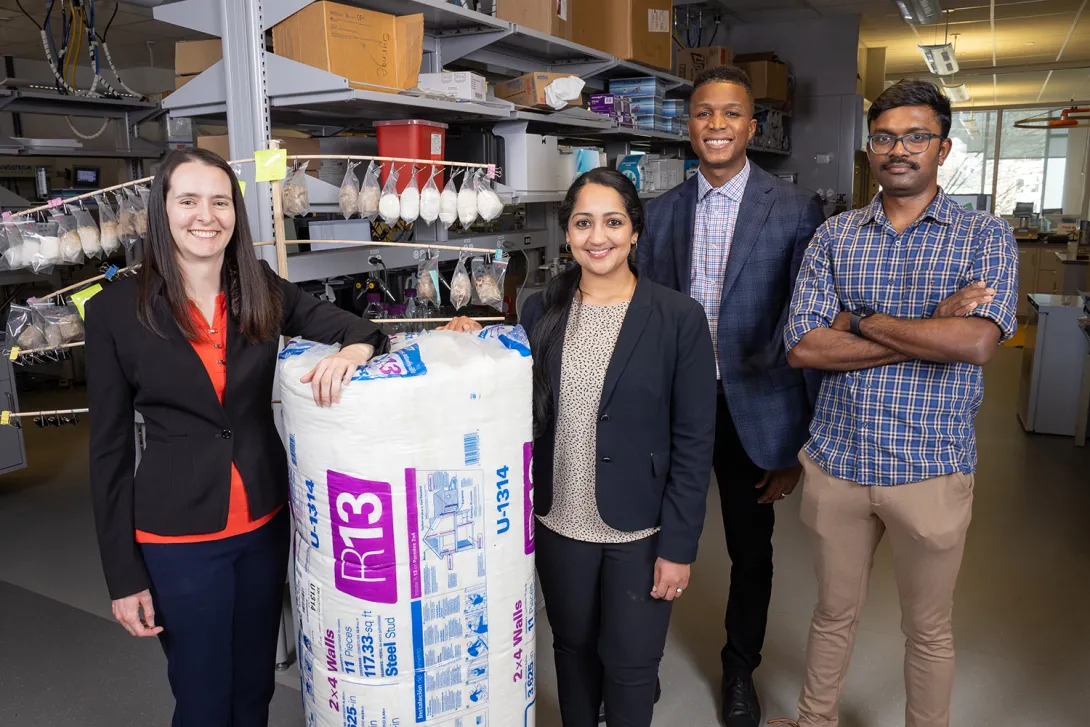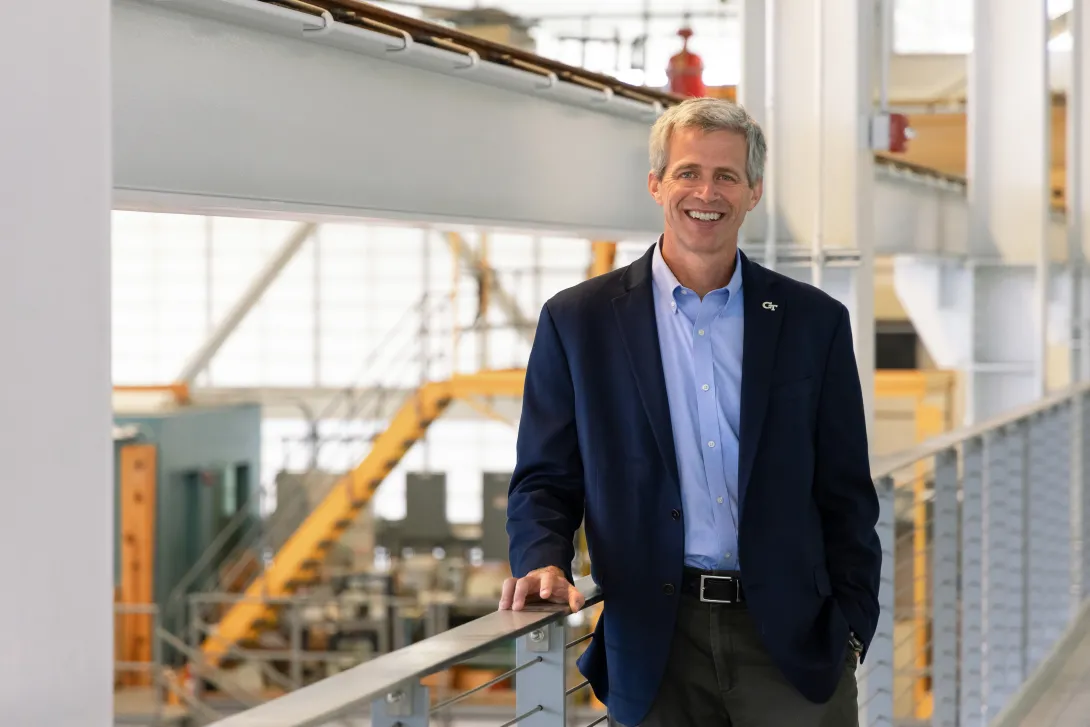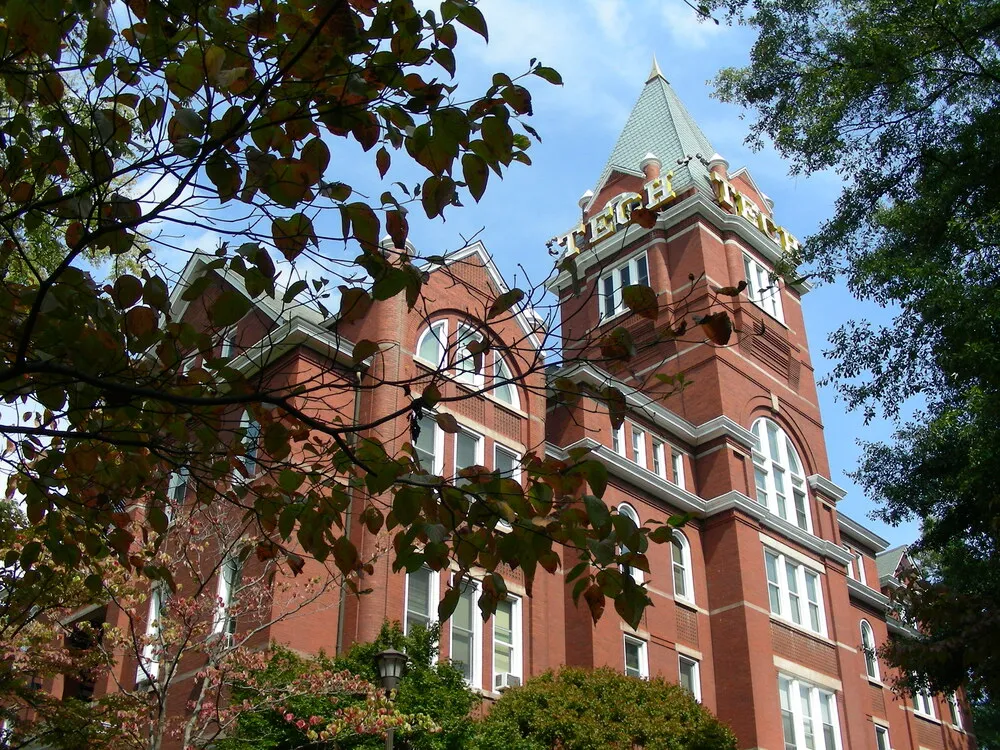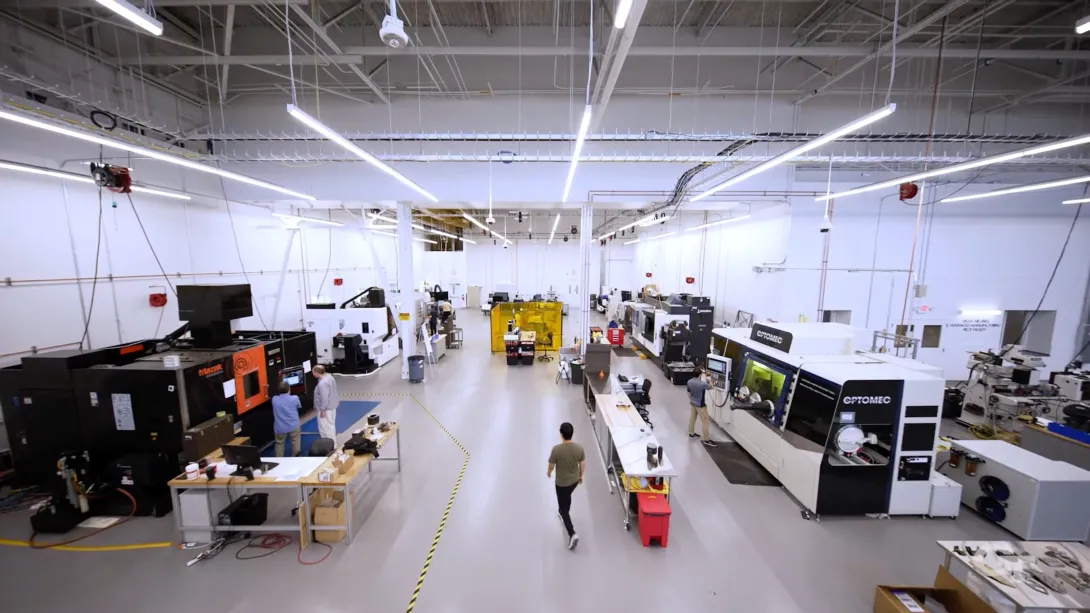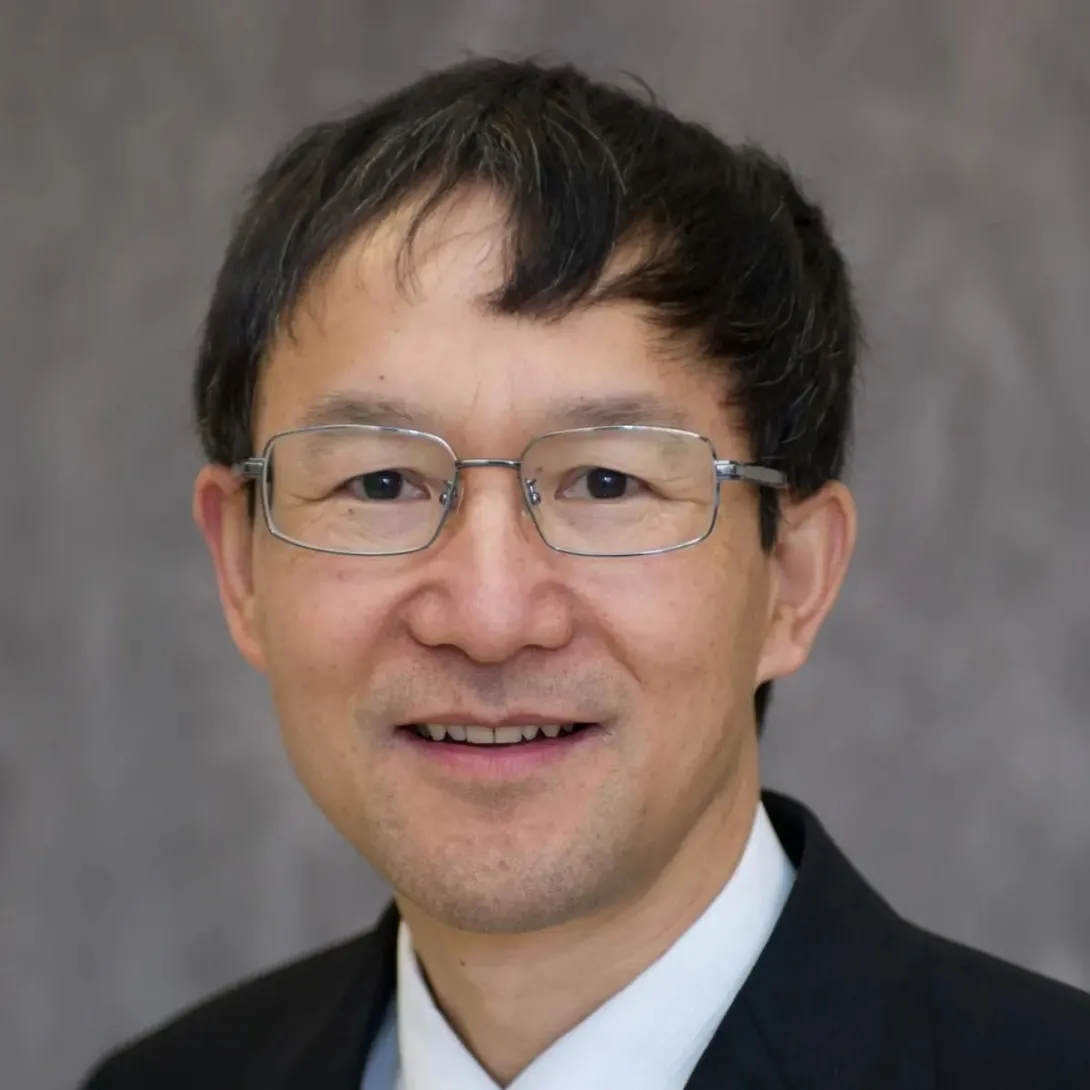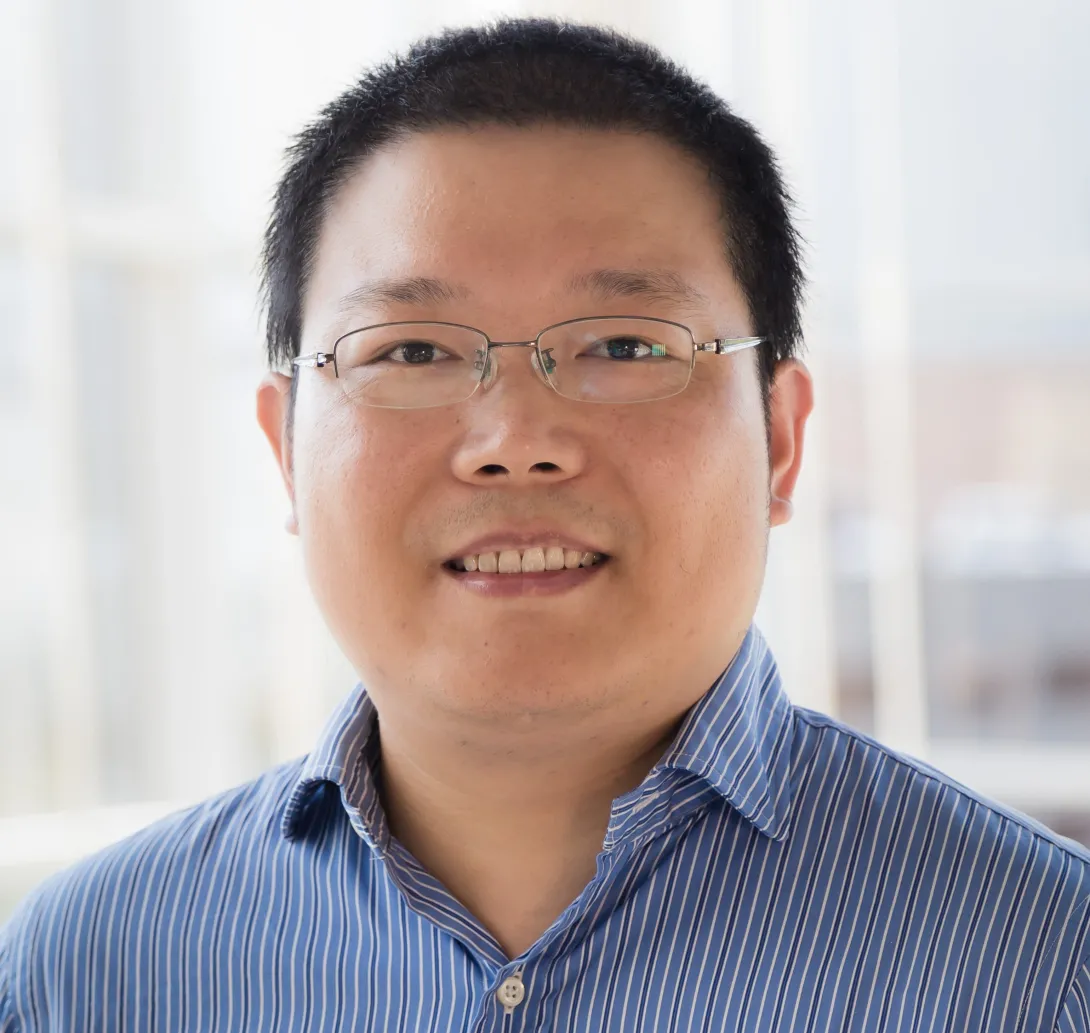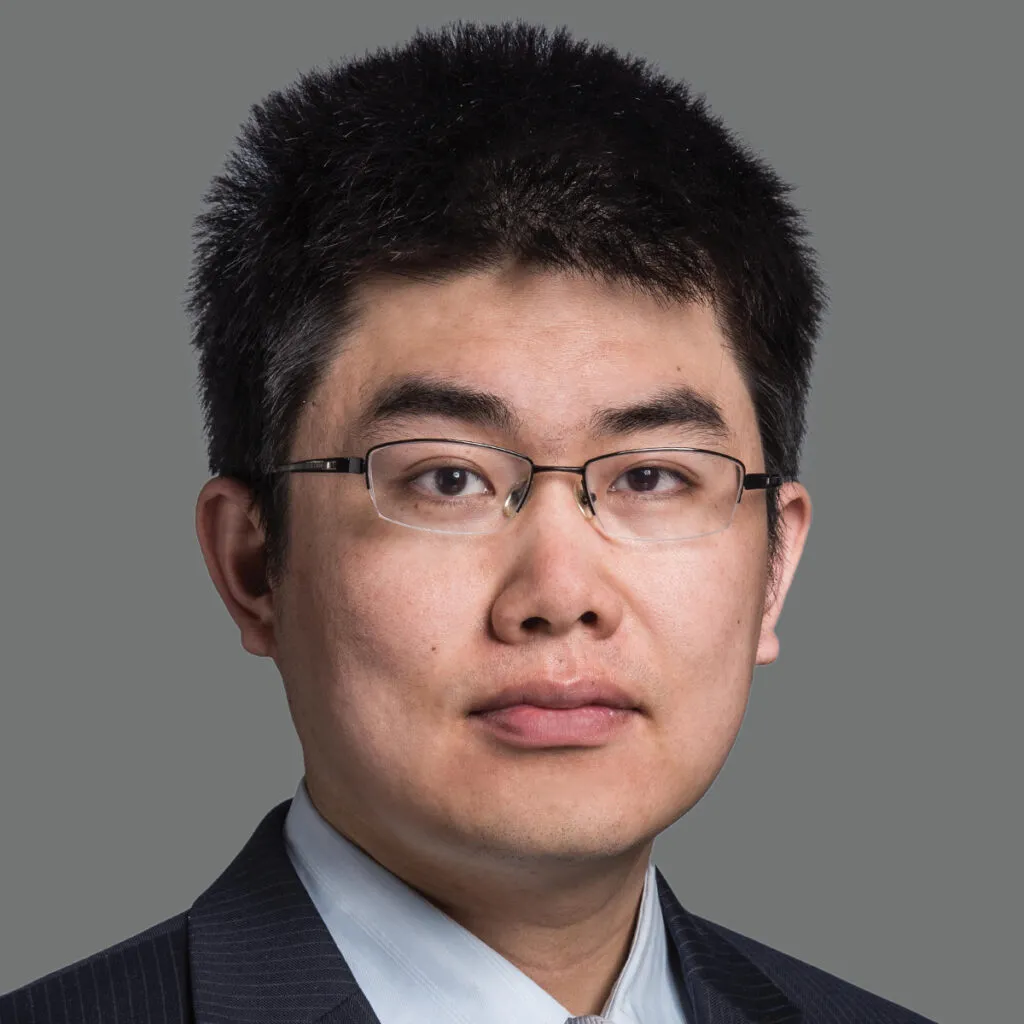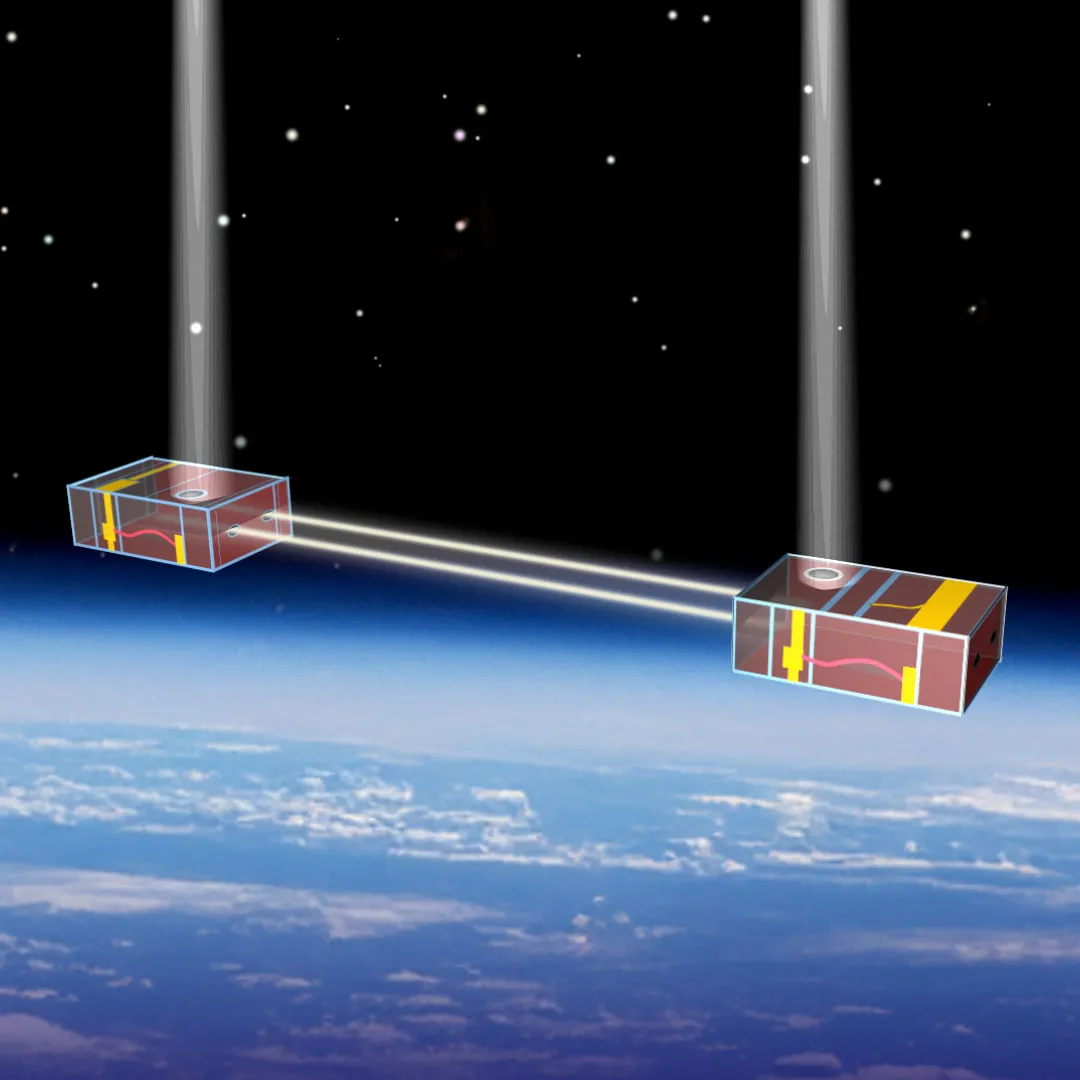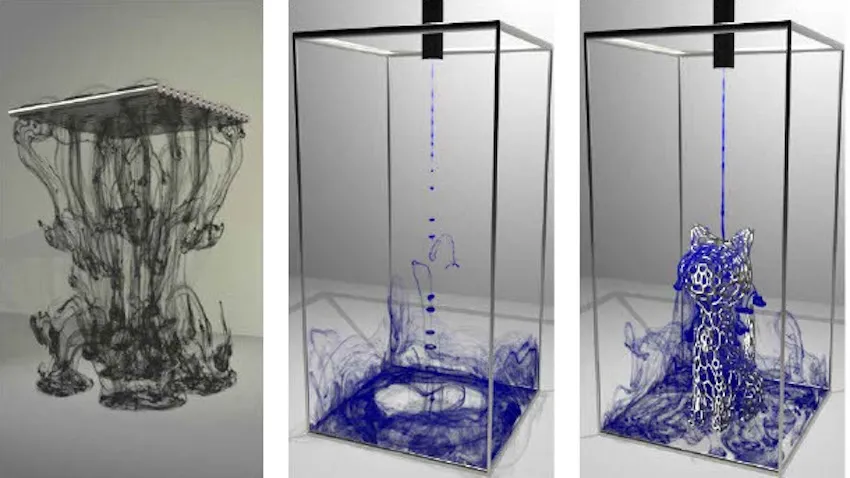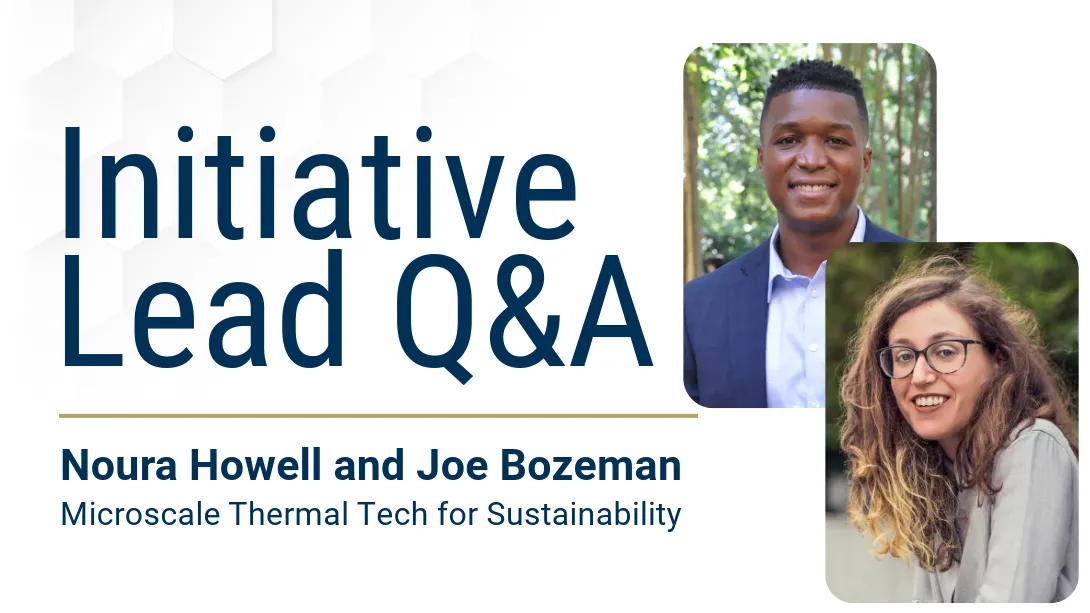Mar. 04, 2025
The space around Earth is central to life on the surface, encompassing myriad economic, technological, political, and even military considerations that affect the lives of millions. A new center devoted to space policy in the Sam Nunn School of International Affairs seeks to support the School’s increasingly robust research and teaching in the area.
"Space is becoming an increasingly important domain for our economy and our national security in the United States, as well as worldwide,” said Mariel Borowitz, associate professor in the Nunn School and director of the new Center for Space Policy and International Relations, which holds its first event next week in Washington. “This center can be a hub that brings researchers together and makes progress on these key research issues.”
The Center, which counts six Nunn School researchers among its initial faculty, seeks to advance research in space governance, space security, and the development of space programs internationally, as well as in areas related to international cooperation and diplomacy.
Already, Nunn School researchers are tackling a variety of interdisciplinary space policy projects, including work on the value of satellite data to improving life on Earth, papers assessing space program developments in China and the Middle East, the international political dimensions of developing a global navigation system for the Moon, creating fair rules around access to resources in space, and understanding just what conflict in space might look like.
Their work reaches across the Georgia Tech campus. For instance, the School partners with four other schools across three colleges to offer a graduate certificate in Astrobiology, and with the College of Engineering, the College of Sciences, and the Scheller College of Business on a graduate certificate in Space Entrepreneurship.
The new Center will also complement the work of Georgia Tech’s Space Research Initiative, announced last year and slated to transition into an Interdisciplinary Research Institute this year, according to Adam N. Stulberg, Sam Nunn School Chair and Professor in the Nunn School.
“With researchers pursuing answers to difficult space policy, security, and governance questions from viewpoints and backgrounds as varied as aeronautics, astrophysics, emerging technologies, and political science, we’re embodying the interdisciplinary spirit that will help drive new discoveries that could make humanity’s future in space, and here on Earth, more productive and peaceful,” Stulberg said.
Lawrence Rubin, a Nunn School associate professor affiliated with the new Center, said Georgia Tech and the Nunn School are in a unique position to surge forward as a widely recognized center for space policy research.
“Few universities can match Georgia Tech’s leadership in both scientific research and space policy. That’s the distinction we are building on,” said Rubin, a Middle East expert with U.S. Defense Department experience who has studied the rise of regional space programs in that part of the world.
Another affiliated researcher, Assistant Professor R. Lincoln Hines, said Georgia Tech is already a great place to study space policy, and the Center will only make it better.
Hines, who studies China’s space program, noted that students have access to training in the Daniel Guggenheim School of Aerospace Engineering and opportunities to engage in applied research at the Georgia Tech Research Institute. They can also learn from respected researchers who also have practical experience in the field.
For instance, Borowitz is widely cited in the media on space policy issues, has testified before Congress, and is currently tasked part-time to the U.S. Office of Space Commerce, where she is working on a project to move space debris tracking to a civilian agency from the Department of Defense. Another Center affiliate, postdoctoral researcher Thomas González Roberts, will soon start an appointment at the International Telecommunications Union as an academic in residence studying how satellite operators follow international rules.
“Compared to other universities, we already have one of the largest concentrations of scholars on space policy and security,” Roberts said. “Our research footprint and real-world impact is expanding, and our interdisciplinary program has extraordinary competitive advantages for students seeking a career in this field.”
The Nunn School and the Center will officially launch programming for the Center on March 11 with events in Washington, including a discussion on the future of space policy at the International Institute for Strategic Studies, a dinner discussing the challenges of space traffic management, and an event for Georgia Tech alumni in Washington.
For more information on the Center, visit its website.
News Contact
Michael Pearson
Ivan Allen College of Liberal Arts
Feb. 26, 2025
It’s a fairly niche product now, but a new study from Georgia Tech engineers suggests insulation made from hemp fibers could be a viable industry in the U.S., creating jobs, a manufacturing base, and greener homes and buildings at the same time.
Making the switch could slash the impact of one of the biggest sources of greenhouse gas emissions: Buildings account for roughly 1/5 of emissions globally. By some estimates, using hemp-based products would reduce the environmental impact of insulation by 90% or more.
The Georgia Tech researchers’ work, reported this month in the Journal of Cleaner Production, is one of the first studies to evaluate the potential for scaling up U.S. production and availability of hemp-based insulation products.
Read about their findings on the College of Engineering website.
News Contact
Joshua Stewart
College of Engineering
Feb. 21, 2025
Dust and rocks residing on the surface of the moon take a beating in space. Without a protective magnetosphere and atmosphere like Earth’s, the lunar surface faces continual particle bombardment from solar wind, cosmic rays, and micrometeoroids. This constant assault leads to space weathering.
New NASA-funded research by Georgia Tech offers fresh insights into the phenomenon of space weathering. Examining Apollo lunar samples at the nanoscale, Tech researchers have revealed risks to human space missions and the possible role of space weathering in forming some of the water on the moon.
Most previous studies of the moon involved instruments mapping it from orbit. In contrast, this study allowed researchers to spatially map a nanoscale sample while simultaneously analyzing optical signatures of Apollo lunar samples from different regions of the lunar surface — and to extract information about the chemical composition of the lunar surface and radiation history.
The researchers recently published their findings in Scientific Reports.
“The presence of water on the moon is critical for the Artemis program. It’s necessary for sustaining any human presence and it’s a particularly important source for oxygen and hydrogen, the molecules derived from splitting water,” said Thomas Orlando, Regents’ Professor in the School of Chemistry and Biochemistry, co-founder and former director of the Georgia Tech Center for Space Technology and Research, and principal investigator of Georgia Tech’s Center for Lunar Environment and Volatile Exploration Research (CLEVER).
Building on a Decade of Lunar Science Research
As a NASA SSERVI (Solar System Exploration Research Virtual Institute), CLEVER is an approved NASA laboratory for analysis of lunar samples and includes investigators from multiple institutes and universities across the U.S. and Europe. Research areas include how solar wind and micrometeorites produce volatiles, such as water, molecular oxygen, methane, and hydrogen, which are all crucial to supporting human activity on the moon.
Georgia Tech has built a large portfolio in human exploration and lunar science over the last decade with two NASA Solar System Exploration Research Virtual Institutes: CLEVER and its predecessor, REVEALS (Radiation Effects on Volatiles and Exploration of Asteroids and Lunar Surfaces).
Studying Moon Samples at the Nanoscale Level
Georgia Tech’s labs are world-renowned, particularly for analyzing surfaces and semiconductor materials. For this work, the Georgia Tech team also tapped the University of Georgia (UGA) Nano-Optics Laboratory run by Professor Yohannes Abate in the Department of Physics and Astronomy. While UGA is a member of CLEVER, its nano-FTIR spectroscopy and nanoscale imaging equipment was historically used for semiconductor physics, not space science.
“This is the first time these tools have been applied to space-weathered lunar samples, and it’s the first we’ve been able to see good signatures of space weathering at the nanoscale,” says Orlando.
Normal spectrometers are at a much larger scale, with the ability to see more bulk properties of the soil, explains Phillip Stancil, professor and head of the UGA physics department.
The UGA equipment enabled the study of samples “in tens of nanometers.” To illustrate how small nanoscale is, Stancil says a hydrogen atom is .05 nanometers, so 1 nm is the size of 20 atoms if placed side by side. The spectrometers provide high-resolution details of the lunar grains down to hundreds of atoms.
“We can look at an almost atomistic level to understand how this rock was formed, its history, and how it was processed in space,” Stancil says.
“You can learn a lot about how the atom positions change and how they are disrupted due to radiation by looking at the tiny sample at an atomistic level,” says Orlando, noting that a lot of damage is done at the nanoscale level. They can determine if the culprit is space weathering or from a process left over during the rock’s formation and crystallization.
Finding Radioactive Damage, Evidence of Water
The researchers found damage on the rock samples, including changes in the optical signatures. That insight helped them understand how the lunar surface formed and evolved but also provided “a really good idea of the rocks’ chemical composition and how they changed when irradiated,” says Orlando.
Some of the optical signatures also showed trapped electron states, which are typically missing atoms and vacancies in the atomic lattice. When the grains are irradiated, some atoms are removed, and the electrons get trapped. The types of traps and how deep they are, in terms of energy, can help determine the radiation history of the moon. The trapped electrons can also lead to charging, which can generate an electrostatic spark. On the moon, this could be a problem for astronauts, exploration vehicles, and equipment.
“There is also a difference in the chemical signatures. Certain areas had more neodymium (a chemical element also found in the Earth’s crust) or chromium (an essential trace mineral), which are made by radioactive decay,” Orlando says. The relative amounts and locations of these atoms imply an external source like micrometeorites.
Translating Research to Human Risks on the Moon
Radiation and its effects on the dust and lunar surface pose dangers to people, and the main protection is the spacesuit.
Orlando sees three key risks. First, the dust could interfere with spacesuits’ seals. Second, micrometeorites could puncture a spacesuit. These high-velocity particles form after breaking off from larger chunks of debris. Like solar storms, they are hard to predict, and they’re dangerous because they come in at high-impact velocities of 5 kilometers per second or higher. “Those are bullets, so they will penetrate the spacesuits,” Orlando says. Third, astronauts could breathe in dust left on the suits, causing respiratory issues. NASA is studying many approaches for dust removal and mitigation.
Mapping the Moon: Going from Nanoscale to Macroscale
The next research phase will involve combining the UGA analysis tools with a new tool from Georgia Tech that will be used to analyze Apollo lunar samples that have been in storage for over 50 years.
“We will combine two very sophisticated analysis tools to look at these samples in a level of detail that I don’t think has been done before,” Orlando says.
The goal is to build models that can feed into orbital maps of the moon. To get there, the Georgia Tech and UGA team will need to go from nanoscale to the full macro scale to show what’s happening on the lunar surface and the location of water and other key resources, including methane, needed to support humanity’s moon and deep-space exploration goals.
Feb. 20, 2025
Following a nationwide search, Georgia Tech President Ángel Cabrera has named Timothy Lieuwen the Executive Vice President for Research (EVPR). Lieuwen has served as interim EVPR since September 10, 2024.
“Tim’s ability to bridge academia, industry, and government has been instrumental in driving innovation and positioning Georgia Tech as a critical partner in tackling complex global challenges,” said Cabrera. “With his leadership, I am confident Georgia Tech will continue to expand its impact, strengthen its strategic collaborations, and further solidify its reputation as a world leader in research and innovation.”
A proud Georgia Tech alumnus (M.S. ME 1997, Ph.D. ME 1999), Lieuwen has spent more than 25 years at the Institute. He is a Regents’ Professor and holds the David S. Lewis, Jr. Chair in the Daniel Guggenheim School of Aerospace Engineering. Prior to the interim EVPR role, Lieuwen served as executive director of the Strategic Energy Institute for 12 years. His expertise spans energy, propulsion, energy policy, and national security, and he has worked closely with industry and government to develop new knowledge and see its implementation in the field.
Lieuwen has been widely recognized for his contributions to research and innovation. He is a member of the National Academy of Engineering, as well as a fellow of multiple other professional organizations. Recently, he was elected an International Fellow of the U.K.’s Royal Academy of Engineering, one of only three U.S. engineers in 2024 to receive this prestigious commendation. The honor acknowledges Lieuwen’s contributions to engineering and his efforts to advance research, education initiatives, and industry collaborations.
He has authored or edited four books, published over 400 scientific articles, and holds nine patents — several of which are licensed to industry. He also founded TurbineLogic, an analytics firm working in the energy industry. Additionally, Lieuwen serves on governing and advisory boards for three Department of Energy national labs and was appointed by the U.S. Secretary of Energy to the National Petroleum Council.
The EVPR is the Institute’s chief research officer and directs Georgia Tech’s $1.37 billion portfolio of research, development, and sponsored activities. This includes leadership of the Georgia Tech Research Institute, the Enterprise Innovation Institute, nine Interdisciplinary Research Institutes and numerous associated research centers, and related research administrative support units: commercialization, corporate engagement, research development and operations, and research administration.
“I am honored to step into this role at a time when research and innovation have never been more critical,” Lieuwen said. “Georgia Tech’s research enterprise is built on collaboration — across disciplines, across industries, and across communities. Our strength lies not just in the breakthroughs we achieve, but in how we translate them into real-world impact.
“My priority is to put people first — empowering our researchers, students, and partners to push boundaries, scale our efforts, and deepen our engagement across Georgia and beyond. Together, we will expand our reach, accelerate discovery, and ensure that Georgia Tech remains a driving force for progress and service.”
News Contact
Shelley Wunder-Smith | Director of Research Communications
shelley.wunder-smith@research.gatech.edu
Feb. 18, 2025
Georgia Tech strives to cultivate thought leaders, advance knowledge, and solve societal challenges by embracing various aspects of the research ecosystem. Through the HBCU/MSI Research Initiative, Georgia Tech seeks to capture data surrounding its research impact in the Georgia Tech-HBCU Research Collaboration Data Dashboard. The dashboard allows users to see information regarding joint funding, publications, hubs, and awards won by the HBCU CHIPS Network, which is co-led by Georgia Tech.
“The data dashboard will represent a key resource for both Georgia Tech and HBCU researchers seeking to enhance research collaboration while substantiating Georgia Tech’s commitment as a valued partner,” said George White, senior director for strategic partnerships.
The Georgia Tech-HBCU Research Collaboration Data Dashboard will serve as a point of reference for faculty and staff in the various departments and colleges to identify opportunities of mutual benefits for collaboration and partnership.
To view the dashboard, visit https://hbcumsi.research.gatech.edu/data-dashboard
News Contact
Taiesha Smith
Sr. Program Manager, HBCU-MSI Research Partnerships
Feb. 18, 2025
When Air Force veteran Michael Trigger began looking for a new career in 2022, he became fascinated by artificial intelligence (AI). Trigger, who left the military in 1989 and then worked in telecommunications, corrections, and professional trucking, learned about an AI-enhanced robotics manufacturing program at the VECTR Center. This training facility in Warner Robins, Georgia, helps veterans transition into new careers. In 2024, he enrolled and learned how to program and operate robots.
As part of the class, Trigger made several trips to the Georgia Tech Manufacturing Institute (GTMI). When the faculty asked if anyone wanted an internship, Trigger raised his hand.
“Coming to Georgia Tech allowed me to clarify what I wanted to do,” he said. “I’ve always been in service-based jobs, but I was interested in additive manufacturing,” or 3D printing.
For five months every weekday, Trigger drove from his home in Macon to Georgia Tech’s campus for his internship. The paid internship took place at Tech’s Advanced Manufacturing Pilot Facility (AMPF). This 20,000-square-foot, reconfigurable facility serves as the research and development arm of GTMI, functioning as a teaching laboratory, technology test bed, and workforce development space for manufacturing innovations.
During his time there, Trigger focused on computer-aided manufacturing and met with faculty and students to learn about their research. The internship wasn’t convenient, but it was worth it.
“From our campus visits, I understood the mission of AMPF, so the fact they offered me this opportunity was huge for me,” he said. “The internship had a big impact on my life in terms of the technical and soft skills I gained.”
Building the Workforce
Launching new careers is just one of AMPF’s goals in testing new manufacturing and growing the future U.S. workforce. Since 2022, AMPF has improved the manufacturing process at all parts of the talent pipeline — from giving corporate researchers space to test and adopt AI automation technologies to training and upskilling their employees. Collectively, GTMI and AMPF’s efforts have led to a stronger, bigger network of manufacturers that other companies and the U.S. government can rely on.
“We are going to need to manufacture more in the U.S. — from computer chips to cars — so we want to create jobs and fill them,” said Tom Kurfess, GTMI’s executive director. “We need more people working in the manufacturing sector, and we've got to make these jobs better and make people more efficient in them.”
AI is one way to boost efficiency, but artificial intelligence won’t cut humans out of the process entirely. Rather, people will be integral to monitoring the systems and advancing them. As AI becomes more widely adopted, a college degree won’t necessarily be required to work in the AI field.
“Our workforce is going to need the next generation of employees to be amenable to retraining as the technology updates,” said Aaron Stebner, a co-director of the Georgia Artificial Intelligence Manufacturing program (AIM). A statewide program, Georgia AIM helps fund AMPF and sponsored Trigger’s internship. “Education is going to be more of a lifelong learning process, and Georgia Tech can be at the forefront of that.”
While GTMI already integrates AI into many processes, it remains committed to staying ahead of the curve with the latest technologies that could boost manufacturing. The facility is in the process of an expansion that will nearly triple its size and make AMPF the leading facility for demonstrating what a hyperconnected and AI-driven manufacturing enterprise looks like. This will enable GTMI to build and sustain these educational pipelines, which is key to its work.
“We’re developing the workforce for the future, not of the future,” explained Donna Ennis, a co-director of Georgia AIM. “It’s AI today, but it could be something else five years from now. We are focused on creating a highly skilled, resilient workforce.”
Part of Georgia AIM’s role is creating the pipelines that people like Trigger can follow. From bringing a mobile lab to technical colleges to hosting robotics competitions at schools, these efforts span the state of Georgia and touch populations from “K to gray.”
“Kids don’t say they want to be a manufacturer when they grow up, but that’s because they don’t know it’s a viable career path,” Ennis said. “We’re making manufacturing cool again.”
Creating Corporate Connection
To create these job opportunities, GTMI is also partnering with corporations. Companies can join a consortium to access the AMPF research facilities and collaborate with researchers. Any size or type of company can take advantage of AMPF facilities — from corporations including AT&T and Siemens to small startups like Alegna, which licenses and commercializes Navy research.
“The ability to manufacture domestically is critical, not only for national security purposes, but also to keep the U.S. economically competitive,” said Steven Ferguson, a principal research scientist and executive director for the GT Manufacturing 4.0 Consortium. “Having the AMPF puts Georgia Tech within the innovation epicenter for these areas and will help us reshore manufacturing.”
The benefit of such an arrangement is twofold. Companies can work with the newest manufacturing technologies and make their own advances, and Georgia Tech builds a network of manufacturers across the state and world that students can work with. For example, AT&T uses the AMPF to test sensors for expanding personal 5G networks, and George W. Woodruff School of Mechanical Engineering Professor Carolyn Seepersad has Ph.D. students funded by a Siemens partnership through AMPF.
Trigger was able to connect and collaborate with some of these corporations and researchers during his internship. “I told them about my interest in machine learning because I wanted to see how they were integrating machine learning into their research projects,” he said. “All of them invited me to come by to observe and be part of the research.”
Starting a New Path
Because of his research collaborations during his AMPF internship, Trigger now has a new focus. “The internship clarified for me that AI is where everybody is going,” he explained. He wants to be at the forefront of AI manufacturing and hopes to pursue a certificate in machine learning next.
While he knows he still has much to learn, AMPF gave Trigger a foot in the door and confidence about the future. He — and other veterans like him — will help build the workforce that propels America forward in manufacturing.
News Contact
Tess Malone, Senior Research Writer/Editor
tess.malone@gatech.edu
Feb. 17, 2025
Someday, your drinking water could be completely free of toxic “forever chemicals.”
These chemicals, called PFAS (per- and polyfluoroalkyl substances), are found in common household items like makeup, nonstick cookware, dental floss, batteries, and food packaging. PFAS permeate the soil, water, food, and air, and they can remain in the environment for millennia. Once inside the human body, PFAS can persist for years, suppressing the immune system and increasing cancer risk.
Georgia Tech researchers, armed with a cutting-edge machine learning (ML) model, are spearheading a multi-university initiative. Their goal? To design a better membrane that efficiently removes PFAS from drinking water, a significant source of human exposure.
“More than 200 million Americans in all 50 states are affected by PFAS in drinking water, with 1,400 communities having levels above health experts’ safety thresholds,” noted the study’s principal investigator Yongsheng Chen, Bonnie W. and Charles W. Moorman IV Professor in Georgia Tech’s School of Civil and Environmental Engineering. Chen also directs the Nutrients, Energy, and Water Center for Agriculture Technology, or NEW Center. “Our research aims to provide a scalable, efficient, and sustainable solution for mitigating these toxic chemicals’ impact on human health and the environment.”
The resulting work, funded with over $10 million in multiyear grants from the U.S. Department of Agriculture (USDA), the National Science Foundation, and the Environmental Protection Agency (EPA), was recently published in Nature Communications.
Sewage Treatment Limitations
Conventional water treatment processes are ineffective at removing PFAS. Too often, traditional cleansing methods, such as using chlorine to kill pathogens in water, create harmful byproducts.
“Solving one problem creates another problem,” said Chen.
He has already used ML and artificial intelligence in precision agriculture to monitor nutrient levels in plants and insists that tackling PFAS removal similarly requires new approaches. Rather than treating an entire body of water, Chen’s team first separated PFAS from the water stream. Success depended on finding the right membrane material to isolate the chemicals in the water.
Chen relied on a team of 10 Ph.D. students and nine research scientists to perform the ML modeling. In addition to Georgia Tech, two other schools contributed people and laboratory expertise. The University of Wisconsin-Madison (UWM) validated the model with molecular simulations, while Arizona State University (ASU) trained it using data from scientific literature and their lab.
“Applying machine learning to membrane separation represents an exciting frontier for environmental engineering,” said Tiezheng Tong, an associate professor of environmental engineering in ASU’s School of Sustainable Engineering and the Built Environment.
This is another step in tackling PFAS pollution, a widespread problem that has recently received significant public attention due to PFAS’ toxic nature and the recent EPA ruling on PFAS in drinking water, he said.
“By integrating with molecular simulation tools, we can better understand PFAS transport across nanofiltration and reverse osmosis membranes, pushing the boundary of fundamental science relating to membrane separation,” Tong said.
ML Accelerates Membrane-Material Discoveries
Using ML modeling significantly sped up the discovery process. For instance, one Ph.D. student in Chen’s lab used trial and error over two years to pinpoint one promising membrane. Machine learning modeling allowed the team to find eight membrane candidates 10 to 20 times faster, reducing discovery time from years to a few months.
“Our molecular dynamics simulations reveal that electrostatic interactions, size exclusion, and dehydration play critical roles in governing the transport of PFAS molecules across polyamide membranes,” Ying Li explained. Li is an associate professor of mechanical engineering at UWM. “These calculations indicate that electrostatic interactions dominate PFAS rejection, with charged functional groups significantly influencing transport behavior. The simulation results provide fundamental insights that align with ML predictions, highlighting the key molecular determinants of PFAS removal efficiency.”
Addressing PFAS Exposure in Agriculture
By addressing PFAS contamination, this research could also benefit the agriculture industry, which depends on fertilizer sourced from water treatment plants. Wastewater biosolids are processed into fertilizer, offering farmers and ranchers a cheaper alternative to chemical fertilizers. Unfortunately, PFAS-tainted fertilizers from sewage sludge have contaminated significant amounts of land and livestock. Industry groups estimate that almost 70 million acres of U.S. farmland could be contaminated by these forever chemicals.
By funding this research, the USDA hopes that an effective membrane will help the United States reclaim this crucial resource.
“Synthesizing a very smart membrane to get rid of PFAS also allows us to recover the fertilizer from municipal wastewater treatment plants,” Chen said. “Such a membrane could enable us to get rid of things we don’t want and keep the things we need, so we can keep the water for irrigation or other applications.”
Eliminating PFAS in fertilizers also could help address the mismatch of food and water demand in urban versus rural areas since 80% of the demand resides in cities. PFAS removal could directly support urban area resource recovery and food production.
“Our goal is achieving a circular economy where materials never become waste, and nature is regenerated,” Chen said.
What’s Next
The team will fine-tune the model and add more data to improve its training features. Chen will synthesize membranes in his lab to further test the model's PFAS removal predictions.
Today, scientists have found ways to remove long chains of PFAS, but the shorter chains of these chemicals persist, explained Chen.
“If we can better understand the mechanism, we’ll be able to design a good material membrane to get rid of all PFAS. That could be game-changing.”
— By Anne Wainscott-Sargent
Funding
This work is partially supported by the NSF (Award Nos. 2112533, 2427299, 2345543, Y.C.; 2448130, T.T.; and 2345542, Y.L.).
Y.C. acknowledges the financial support by the USDA (Award No.2018−68011-28371), NSF-USDA (Award No. 2020-67021-31526), and EPA (Award No. 840080010).
T.T. acknowledges the support of the USDA National Institute of Food and Agriculture (Hatch Project COL00799, accession 1022591).
Y.L. acknowledges the financial support by the National Alliance for Water Innovation (NAWI), funded by the US DOE, Office of Energy Efficiency and Renewable Energy (EERE), Advanced Manufacturing Office, under Funding Opportunity announcement Number DE-FOA-0001905, through a subcontract to the University of Wisconsin-Madison.
News Contact
Shelley Wunder-Smith | Director of Research Communications
shelley.wunder-smith@research.gatech.edu
Feb. 13, 2025
A new NASA-funded project will have Georgia Tech aerospace engineers developing new technology to one day study planets outside our solar system.
It's a $10 million joint mission led by the University of Michigan called STARI — STarlight Acquisition and Reflection toward Interferometry. Georgia Tech’s engineers will build the propulsion systems for a pair of briefcase-sized CubeSats that will fly in orbit a few hundred yards away from one another, bouncing starlight back and forth.
The technology could be used someday to better understand if any known exoplanets are capable of supporting life as we know it.
Interferometry is already used to study stars, gas clouds, and galaxies. Instead of using one large telescope, several smaller telescopes work as a team. The machines swap starlight to create higher resolution images than are possible from a single telescope.
Scientists and engineers have recently proposed using interferometry to locate exoplanets.
STARI will determine if the same type of coordination and light transmission can be done using less expensive CubeSats.
Read the entire story on the College of Engineering website.
News Contact
Jason Maderer
College of Engineering
maderer@gatech.edu
Feb. 06, 2025
Calculating and visualizing a realistic trajectory of ink spreading through water has been a longstanding and enormous challenge for computer graphics and physics researchers.
When a drop of ink hits the water, it typically sinks forward, creating a tail before various ink streams branch off in different directions. The motion of the ink’s molecules upon mixing with water is seemingly random. This is because the motion is determined by the interaction of the water’s viscosity (thickness) and vorticity (how much it rotates at a given point).
“If the water is more viscous, there will be fewer branches. If the water is less viscous, it will have more branches,” said Zhiqi Li, a graduate computer science student.
Li is the lead author of Particle-Laden Fluid on Flow Maps, a best paper winner at the December 2024 ACM SIGGRAPH Asia conference. Assistant Professor Bo Zhu advises Li and is the co-author of six papers accepted to the conference.
Zhu said they must correctly calculate and simulate the interaction between viscosity and vorticity before they can accurately predict the ink trajectory.
“The ink branches generate based on the intricate interaction between the vorticities and the viscosity over time, which we simulated,” Zhu said. “Using a standard method to simulate the physics will cause most of the structures to fade quickly without being able to see any detailed hierarchies.”
Zhu added that researchers had yet to develop a method for this until he and his co-authors proposed a new way to solve the equation. Their breakthrough has unlocked the most accurate simulations of ink diffusion to date.
“Ink diffusion is one of the most visually striking examples of particle-laden flow,” Zhu said.
“We introduce a new viscosity model that solves for the interaction between vorticity and viscosity from a particle flow map perspective. This new simulation lets you map physical quantities from a certain time frame, allowing us to see particle trajectory.”
In computer simulations, flow is the digital visualization of a gas or liquid through a system. Users can simulate these liquids and gases through different scenarios and study pressure, velocity, and temperature.
A particle-laden flow depicts solid particles mixing within a continuous fluid phase, such as dust or water sediment. A flow map traces particle motion from the start point to the endpoint.
Duowen Chen, a computer science Ph.D. student also advised by Zhu and co-author of the paper, said previous efforts by researchers to simulate ink diffusion depended on guesswork. They either used limited traditional methods of calculations or artificial designs.
“They add in a noise model or an artificial model to create vortical motions, but our method does not require adding any artificial vortical components,” Chen said. “We have a better viscosity force calculation and vortical preservation, and the two give a better ink simulation.”
Zhu also won a best paper award at the 2023 SIGGRAPH Asia conference for his work explaining how neural network maps created through artificial intelligence (AI) could close the gaps of difficult-to-solve equations. In his new paper, he said it was essential to find a way to simulate ink diffusion accurately independent of AI.
“If we don’t have to train a large-scale neural network, then the computation time will be much faster, and we can reduce the computation and memory costs,” Zhu said. “The particle flow map representation can preserve those particle structures better than the neural network version, and they are a widely used data structure in traditional physics-based simulation.”
News Contact
Ben Snedeker, Communications Manager
Georgia Tech College of Computing
albert.snedeker@cc.gtaech.edu
Jan. 29, 2025
Noura Howell and Joe Bozeman lead the “Microscale Thermal Tech for Sustainability” research initiative for the Institute for Matter and Systems at Georgia Tech. Their research in this role focuses on sustainable thermoregulation strategies for climate change resilience. Howell is an assistant professor of digital media in the Ivan Allen College of liberal Arts, and Bozeman is an assistant professor of Civil and Environmental Engineering.
In this brief Q&A, Howell and Bozeman discuss their research focus, how it relates to Matter and System’s core research focuses, and the national impact of this initiative.
What is your field of expertise and at what point in your life did you first become interested in this area?
Howell's field of expertise is Human-Computer Interaction, particularly embodied interaction design research and design futuring. Embodied interaction design research is about designing interactions with technologies that involve more of humans' bodies beyond just eyes on a screen and hands on a mouse or keyboard. Thermal perception (feeling warmth and coolness) is an important part of human embodied experience, and designing technologies for thermal perception is an exciting area of design research. Design futuring, Howell's other sub-speciality, offers ways to envision, discuss, and debate future scenarios with technology. So, this proposal uses design futuring to explore alternative futures for thermal technologies for sustainability.
Howell has been interested in sustainability ever since she was a kid growing up playing in the woods in Florida, picking wild citrus, watching the lizards, frogs, snakes, armadillos, and birds, helping the tortoises cross the road, and canoeing near gators. Howell has been interested in thermal interactions ever since she was a kid in elementary school on the hot Florida playground, touching a hot metal jungle gym bar, and noticing that it felt so hot that it felt cool. Much later, she learned about thermoreceptors in our skin and that this phenomenon is called paradoxical cold, when some cold receptors in our skin respond to high temperatures.
Bozeman's field of expertise is in sustainable energy development, climate change adaptation/mitigation, and developing equitable solutions for socioecological, urban carbon management, and food-energy-water nexus challenges. Bozeman does life cycle assessment and energy systems modeling for sustainability with a special emphasis on the social receptivity of technological administration.
Bozeman first became interested in this area during his time working for the public sector as a sustainability officer and energy manager. In those roles, he oversaw and addressed many sociotechnical challenges regarding indoor comfort, air quality, and compliance with environmental protection laws. During this period, it became clear to him that more needed to be done in thermoregulation and the systems that facilitate it.
What questions or challenges sparked your current research?
Thermoregulation, or maintaining a healthy body temperature, is essential for survival. Meanwhile, the world is getting hotter, and humans must adapt. When people feel too hot, it can hinder their productivity, and extreme heat can lead to death. HVAC uses too much energy and struggles to accommodate the wide variety of thermal comfort preferences of building occupants, while many people work outdoors.
Our project tackles the challenge of sustainable thermoregulation.
Matter and systems refer to the transformational technological and societal systems that arise from the convergence of innovative materials, devices, and processes. Why is your initiative important to the development of the IMS research strategy?
This proposal combines thermal technology and microscale fabrication to innovate sustainable thermoregulation strategies for climate change resilience. This helps advance IMS research strategy in their interdisciplinary areas of microelectronic technologies, built environment technologies, and human-centric technologies. While this project is only a start, sustainable thermoregulation will require transformational technological and societal systems shifts arising from the convergence of innovative materials, devices, and processes, and so this project is a good fit for IMS, and we are very happy to be working on this project under the auspices of IMS.
What are the broader global and social benefits of the research you and your team conduct?
This proposal convenes transdisciplinary expertise across Georgia Tech and beyond to propose agenda-setting visions for future work to establish the significance of this research nexus on more sustainable ways to support people in maintaining a comfortable, healthy body temperature. This is an essential form of climate change resilience and adaptation. This proposal has the potential to impact science, technology, and society through bringing disparate disciplines together to establish a new research area of sustainable, microscale thermoregulation techniques for climate change adaptation. This research promises to conceptually advance the state-of-the-art via design futuring scenarios, future visions of just-around-the-corner possibilities in this new research area.
What are your plans for engaging a wider Georgia Tech faculty pool with the Institute for Matter and Systems research?
We will convene researchers across Georgia Tech and beyond to exchange expertise, brainstorm wild ideas, and synthesize ideas into design futuring scenarios. Stay tuned for interview and workshop opportunities.
Pagination
- Previous page
- 7 Page 7
- Next page

